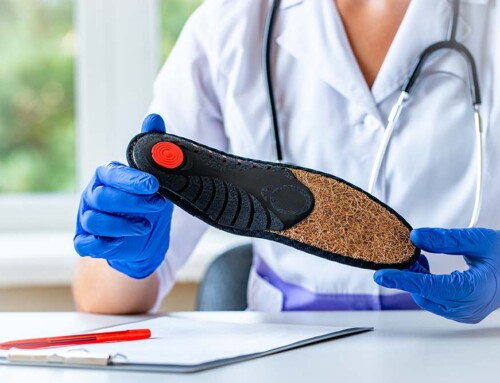Schedule a Consultation: 858.483.9200
Minimizing the Risk That Your San Diego Business Will be Held Liable for Crimes of Your Employees
If you are running a business in San Diego or California, your business CAN be held liable for crimes committed by an employee. Under some circumstances, your business can be held directly liable under theories of vicarious liability or respondeat superior. Under other circumstances, your business can be held indirectly liable under theories of negligent hiring and/or negligent retention. This article will deal with direct liability.
In dealing with employee crimes, it is important to retain a good San Diego corporate lawyer to provide advice and guidance. Here are some tips on minimizing the risk that your business will be directly liable for the crimes of your employees.
San Diego Corporate Law: Direct Liability for Employee Crimes
Under California law, sometimes an employer can be held directly liable for the crimes or intentional torts of an employee. The law is nuanced in this area and it is difficult to articulate a good test. The California Supreme Court attempted to articulate the doctrine in this way: The incident leading to injury/damage must be “engendered by or arise from the work.” Lisa M. v. Henry Mayo Newhall Memorial Hospital, 907 P. 2d 358 (Cal. Supreme Court 1995). Other formulations have been: the injury must be an “outgrowth of the employment” or “inherent in the working environment” or “typical of or broadly incidental” to the work.
As one can see, that is not particularly clear. However, one key concept that IS clear is that something more is needed beyond the fact the employment brought the wrongdoer and victim together in time and place.
A famous example of direct liability is the case of Carr v. Wm. C. Crowell Co., 28 Cal.2d 652 (Cal. Supreme Court 1946). In that case, the employer was a construction company. One day, while working, an employee threw a hammer at the head of a fellow worker who had irritated him. The hammer hit the worker in the head causing severe injury. The California Supreme Court stated that “[i]t is settled that an employer is liable for willful and malicious torts of his employee committed in the scope of the employment.” The employer argued, however, that throwing a hammer was not within the “scope of employment.” The court rejected the argument saying that it was “sufficient” that the injury resulted from a dispute arising out of the employment and that “[s]uch injuries are one of the risks of the enterprise.”
Similarly, in Rodgers v. Kemper Constr. Co., 50 Cal. App. 3d 608 (Cal App. 4th Dist. 1975), a subcontractor at a dam construction site was held directly liable when two of its employees, who had been drinking beer at the jobsite, assaulted workers of the general contractor after requesting and being refused a ride on a bulldozer driven by one of the victims.
By contrast, a famous example where no direct liability was found is from the Lisa M. case cited above. In that case, a technician employed by the hospital sexually molested a pregnant patient while she was under anesthesia after giving her an ultrasound examination. The California Supreme Court held that, as a matter of law, the technician’s assault did not create direct liability on the part of the employer hospital — the sexual/prurient interest did not engender from or arise out of the work or the workplace. See also Farmers Ins. Group v. County of Santa Clara, 11 Cal.4th 992 (Cal. Supreme Court 1995) (same; sheriff department not directly liable where deputy sheriff lewdly propositioned and offensively touched other deputy sheriffs working at the county jail); Thorn v. City of Glendale, 28 Cal. App.4th 1379 (Cal. App. 2nd Dist. 1994) (city not directly liable where fire marshal set business premises on fire during an inspection; arson is a “personal compulsion” not engendered or arising out of the work).
San Diego Corporate Law: Tips for Avoiding Direct Liability for Employee Crimes
The relevant California cases show that, often, the catalyst for criminal and intentional misconduct is anger and passion generated by stressful work environments. Alcohol use is also a contributing factor in many cases. Based on a review of the case law, here are several steps that your business can take to help minimize the risk of direct liability:
- Retain a good corporate lawyer to review and update your employee handbook; sections need to be included concerning no tolerance for criminal conduct or intentional torts against co-workers and customers
- Establish training protocols for employees that might help avoid excessive anger that might lead to aggressive and criminal behavior
- Establish policies and procedures with respect to “cooling off” periods — managers can be trained to “spot” dangerous stressful situations; sending an employee for a five minute “cooling off” break can help
- Make sure your business has adequate insurance
- Create company policies against drug and alcohol use — this is even more important now that marijuana is legal in California
- Consider alcohol ignition lock devices for company vehicles — such devices prevent the vehicle’s engine from starting if there are traces of alcohol on the breath of the employee
Contact San Diego Corporate Law Today
If you would like more information, contact attorney Michael Leonard, Esq., of San Diego Corporate Law. Mr. Leonard can be reached at (858) 483-9200 or via email. Mr. Leonard has been named a “Rising Star” three years running by SuperLawyers.com and “Best of the Bar” by the San Diego Business Journal.
You Might Also Like:
A Checklist for Hiring Your First Employee
San Diego Businesses: Tips for Avoiding Litigation
San Diego Business Law: Updating Your Company Sexual Harassment Policies






